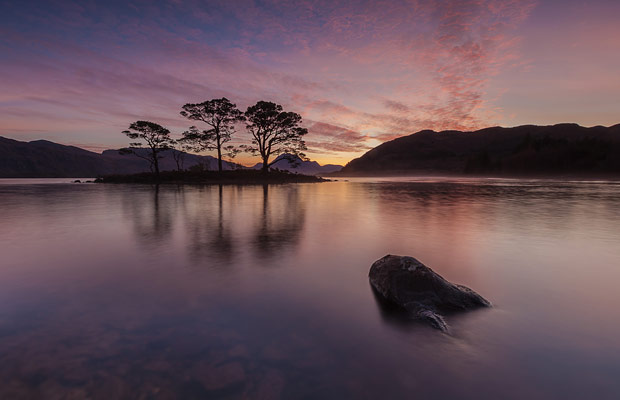RAW vs JPG
In a nutshell, there is a lot more information recorded in a raw file than in a jpg one, hence the amount of flexibility during processing is much higher. Our advice? Shoot raw.
Research
Make sure you do your research before you leave home. Imagine going for a sunset shoot at that beach with the gorgeous rock formations protruding through the golden sand, only to find out that they don't exist because the tide is too high.
Check before you go
Check that you have everything in your backpack from the night before. We hear stories of people forgetting their memory card at home. Also, make sure your camera batteries are fully charged and your gear is clean. Take a couple of soft fibre cloths with you.
Composition
You have found a beautiful location to photograph, now what? Do you just lift the camera and shoot? Do you set the camera on a tripod and shoot?
Spend some time walking around and try to find something that really catches your eye, something you could use as foreground. It is this foreground that will supply your image with the 3D effect that you need giving the illusion of depth.
Make sure your composition is spot on, avoiding the inclusion of parts that are not wanted in the framing. Pointless cropping your images later in software, you are wasting valuable pixels; composition is where you should spend most of your time.
Rule of thirds
 Take a look at the picture below. Imaging this is your composition and you have drawn 2 vertical and 2 horizontal lines, where those lines meet you should place your main subject. Your subject can also be placed along the 2 vertical and 2 horizontal lines.
Take a look at the picture below. Imaging this is your composition and you have drawn 2 vertical and 2 horizontal lines, where those lines meet you should place your main subject. Your subject can also be placed along the 2 vertical and 2 horizontal lines.
Also, if you split your pictures in 3 parts, 1 part should contain sky and 2 parts should contain land. There are more rules but let’s stick to these basic ones for just now.
However, when you learn all about rules and you are very comfortable with their use, it is a good idea to break them from time to time, especially when your subject demands to (see picture below).
Aperture
 In landscape photography you need depth. Depth can be achieved either with the careful use of lens tilt (see issue 27 on how to use Tilt/Shift lens) or a very small aperture such as f/22. However, we need to remind you that with small apertures you get diffraction, which means less detail in your pictures. Check out our FREE article on "Understanding Lens Diffraction".
In landscape photography you need depth. Depth can be achieved either with the careful use of lens tilt (see issue 27 on how to use Tilt/Shift lens) or a very small aperture such as f/22. However, we need to remind you that with small apertures you get diffraction, which means less detail in your pictures. Check out our FREE article on "Understanding Lens Diffraction".
If you are using a DSLR with small sensor such as a APS-C, our advice is to keep the aperture below f/13 and, if you are using a full frame camera, keep your aperture below f/16.
Shutter Speed
You should start by using aperture priority on your camera as you always want to control the aperture and let the camera take care of the shutter speed.
However, if you want (for any reason) the shutter speed to be a lot slower than the camera’s suggested one, you should not use a smaller aperture (f/22). Instead, you should use neutral density filters. They block the light and force the camera to shoot under slower shutter speeds.
ISO
When your camera is mounted on a tripod, you should always make sure the camera’s ISO is at the smallest setting (usually 100-200, depending on camera brand and model).
Metering / Exposure
We advise you to start with the use of evaluative/matrix metering that your camera offers. In-camera metering systems are highly accurate and reliable enough these days.
Best time of day
The best time for shooting landscapes is the golden hour, that is 45 minutes before/after every sunrise/sunset. Saying that, a cloudy and dramatic sky can also be very attractive for certain occasions as it can convey mood. Also, cloudy sky means diffused light and diffused light means excellent light for waterfalls.
Filters
 Shooting around the golden hour means large dynamic range difference in light. Expose for the land and you lose the sky, expose for the sky and the land comes out black. The answer is neutral density graduated filters. These are half dark and half clear filters. They block the light from the sky entering the sensor and balance the exposure for you.
Shooting around the golden hour means large dynamic range difference in light. Expose for the land and you lose the sky, expose for the sky and the land comes out black. The answer is neutral density graduated filters. These are half dark and half clear filters. They block the light from the sky entering the sensor and balance the exposure for you.
When using filters, you need to take an exposure from the sky and one from the land. This will tell you what strength filter you need.
You can buy expensive or value filters. Needless to say that high quality (expensive ones) are much better for landscapes and they do not introduce strange colour casts like value ones do.
White Balance
If you are shooting raw, leave the white balance to auto. It is usually accurate and, if your camera gets it wrong, you have full control of correcting it during processing.
Shutter Release Cable
Even when using tripod, sometimes due to the non so solid ground, pressing the shutter button might cause movement and movement causes motion blur. To avoid that, you will need to use a shutter release cable and mirror lock-up. You can buy basic and good value shutter release cables or very expensive ones that do much more than releasing the shutter. Do a research before you buy one. As for mirror lock-up, we advise you to read the camera’s manual.
You do not need to use mirror lock-up if / when you are using Live View.
Tripod
The best advice we can offer is “Buy once - Buy good”. Some people buy the cheapest tripod they can, either because they can’t afford a proper one or the camera shop salesman told them so. Do your research and buy once. A good tripod that we recommend is the Manfrotto 055.
One more thing when you are using a tripod. Fit a small spirit level on the hot shoe of your camera, it will help you keep the horizon straight. You don't have to by an expensive one, a few £/$ will get you one from ebay.
Tripod Head
With the tripod you will need a good tripod head. There is a huge variety of tripod heads out there, from 3 way to ballhead ones. The one we recommend for landscape photography is the Manfrotto 410 junior.
No, we do not get commission from Manfrotto for this article.
Know Your Gear
No matter what gear you are using, you need to know your gear and know it well. Learn how your camera/lens/everything else works best, in order to get the best out of them. It is only then that you can concentrate on making images.
Final Check
Before you hit that button and capture that gorgeous sunset, make sure you have checked everything. It will be sad when you go home to realise that the ISO was set to 3200 from the night before.
Patience
Most of the time, before you take a picture, you usually have to wait for the right time, the time the light is at its best. You need to have enough patience to achieve this and we assure you, good things come to those who wait.
Finally
Go out there, take pictures, have fun. That’s what it’s all about.
For more detailed information, you can read Mike Bell's articles inside our Beginners Guide.




3 Comments
Quite right. But if you have
enough space on your card,
shoot tiff. Also if your camera
allows you to choose tiff. ?
Fantastic article, tells all about, One important things I would like to high light here, please check batteries, lenses condition and memory card (for DSLR), I personally missed some good shoot by running out of memory and low Batt.
Thanks again for this valuable article.
Sanjoy Adak
A good, informative article. I would add that before going out on a shoot, make sure to charge your batteries, clean your lenses/sensors.
Also, you "Cockin filters" Should be "Cokin filters"
Thanks for the article
Steve Wright